Tosh Berman's Blog, page 230
May 4, 2014
May 4, 2014

May 4, 2014
This is my third day in the roll where I try to focus on painting a landscape, that is outside my living room window. Being the son of an artist, one tends not to go into a parent’s occupation and field of expertise, but then, there is that vision that I have in my head, and what I see outside the window matches pretty much, with respect to how I feel, a workable relationship. I never or ever cared about contemporary art. I’m mostly interested in capturing nature as not only how I see it, but I believe how most people see it as well. So as an ‘artist’ I basically just always want to share a common vision that we all have that is nature. The tricky part is the skill in conveying that image as well as finding the perfect picturesque quality of that painting.

Most people I know are very much taken with the skill of the artist or painter, or even musician. For instance, it is hard for most to convey if the idea is good or even original, but on the other hand if I can play the piano, and use certain stylish flourishes on the keyboard, most people will be satisfied with the results. My focus is very much on that aspect of making art. For instance, I pretty much studied the works of the American landscape painter Frederic Edwin Church who specialize in not only painting realistic landscapes, but also added a touch of spirituality to the mix as well. When we examine the nature, we’re trying to see the face of God. A landscape painting has certain aspects to search for a religious feeling of some sort through the relationship between the sky and the trees. The psychology of the painter, where he or she (there are woman painters as well) expose their inner demons by attaching it an image of nature. Or perhaps one is wanting to make the ‘ideal’ world, by expressing the beauty of such a nature. Often when we put in an animal or even a human in the landscape painting, I find that kind of risky. That image could throw off the whole theme of the work, or bring the viewer to another part of the world, where you the artist, don’t want to take advantage of the viewer. It’s a complicated relationship. That’s for sure.
The mechanical skill of using the brush is of great importance. The fact is because i want to hide my brushstrokes to make it look like no artist touched the painting. I hope to lessen the artist’s presence in the work, so the viewer can just concentrate on the work, without thinking about me as the artist. There are individuals out there who always want to take the credit, but for me, I rather the work takes the credit, and if the viewer can forget that I painted the picture, well that is the charm of the art piece itself.

Bartolomeo Cristofori is considered to be the inventor of the piano. Originally he thought of the keyboard being attached to various species of cats - because each type of cat has a specific sound. This of course wasn’t logical, for various reasons. For one, the original piano wire, which was made out of catguts, is considered cruel - especially when that piano string may be a relative to the actual cat used in the keyboard. Over time, the catgut was replaced by piano wire made from tempered high-carbon steel. And of course attaching the steel wire to a cat was not such a hot idea as well. The big problem I see between a painter (like myself) and a piano player is that of ego. I believe when one hears or sees a performance, they immediately think of the player and his or hers (there are woman piano players as well) performing that music. On the other hand if you walk into a gallery or museum (hopefully that is where my work will end up), you come upon the painting, and the viewer throws themselves into the imagery as well as the spiritual feeling of the piece. The painter is removed from the work, which I think is the proper position of an artist.

The tension between music and the visual arts is sort of like putting a cat and dog together in a cage. The personalities of both beasts are so different from one to another. It is my view that the music and the visual arts need to be separate from each other. I tend to get upset when I pick up a classical music album, and they utilize a romantic landscape painting on its cover. I don’t believe that it is the role of the painter or artist to convey what the music sounds like that is inside the album cover.
Published on May 04, 2014 12:21
May 3, 2014
May 3, 2014
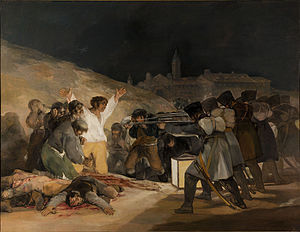
May 3, 2014
I was listening to Isidore Isou’s short sound text piece, “Rituel Somptueux pour la Selection des Especes, ” this morning and I thought how remarkable it is to be aware of one’s existence in a world that has no meaning whatsoever. I am listening to something in French, a language I don’t know, and yet, I can appreciate the sound poem, without fully understanding its meaning, if there is even a meaning behind the work. I woke up this morning, since it is May 3, with the image of Goya’s painting “The Third of May 1808.” Is it a creative work of art, or just reporting an incident or even an image. I seem to be confused between the artificial and what is real.

I read various newspaper accounts of Emmett Dalton, who was part of the legendary Dalton gang of bank robbers during the wild west. Emmett was shot 23 times during a robbery that failed of course, but he did recover from his wounds and ended up in prison. The governor gave him a pardon, where Dalton eventually ended up as an entertainer with a message for his audience. He made a film in 1912 called “The Last Stand of the Dalton Boys, ” which was made as three-reeler. Emmett played himself in the film, and not only that, but he also toured with the film, giving a speech before and after the screening. His basic message was that crime doesn’t pay. To quote “the biggest fool on earth is the one who thinks he can beat the law.” The irony is I think he did beat the law, or used his past profession as a new profession. He died in 1937 in South Central Los Angeles, which ironically enough is the same neighborhood that Western legend Wyatt Earp also lived and died. They say there are no second acts in life, but alas that is not true.
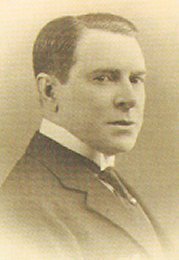
One has to keep in mind what Niccolò Machiavelli has said “Everyone sees what you appear to be, few experience what you really are.” This is profoundly true on so many accounts. Personally people approach me as what they think I am. The truth is I’m not that person whatsoever, but I never tell them that. I let them decide or define who I’m. Emmett was an individual who played with his image, and to confuse that identity by being in a film or even in a book is role playing. I'm more impressed with people like François Coty who was a French perfumer, who didn't hit it big with his product till he accidently dropped a bottle of perfume in a busy Parisian department store. His empire was built on a smell, an odor, yet it was the scent that built up a right-wing force in 20th century France. He eventually purchased Le Figuro, the national newspaper, and when he did he remove "Le" from the title, and it became the voice for right-wing causes. Although a horrible racist, he was also a brilliant business man who realized that a scent doesn't always have to appeal to a certain price or even class. He made various versions of his scent, at different prices and therefore it was a scent that went around the world. He also owned all aspects of his perfume production, by owning the flower fields that originated the scent as well as the printing presses that made the labeling and the delivery vehicles that brought the product to the stores and distributors. In a sense, he had it all, and he defined the world in his own image. Not that far off from someone like David Koch, who not only was a libertarian but also made sure his name was on every building that he made as well as his various hospitals and medical centers that he had built. The powerful are often the most honest, and Machiavelli knew how to worm inside such a person's head to make him or her insecure.

The most honest man, with respect to his art or presence is Bing Crosby. A superb vocalist, but what he contributes to the world was the multitrack reel-to-reel tape machine. He was likewise the first person to pre-record his radio shows and put them on magnetic tape. Therefore he can choose his first love, golf playing, and not having it interfere with his ‘radio’ work. The beauty of all of this for me was that he could destroy the sense of actual time, and make one up, or give an appearance that everything is placed in “real time.” Which comes back to “The Third of May 1808, ” is that reportage or is that a work of art?
Published on May 03, 2014 11:50
May 2, 2014
May 2, 2014
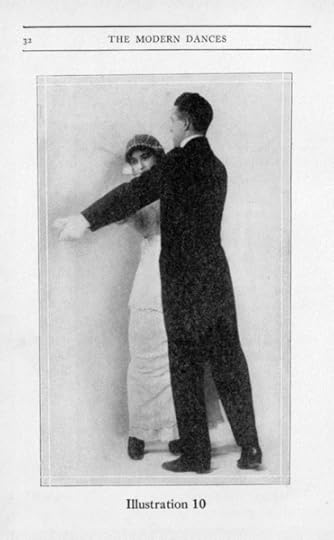
May 2, 2014
Some years back, I went to "The House of Castle" to learn ballroom dancing, because at one time, I thought I could get work as a gigolo. I didn’t become a gigolo, but I did learn (sort of) the Castle Walk. Basically what I have to do is go forward while my partner goes backwards. This sounds easy, but I’m by nature a non-agressive person, so I have to ‘act’ in a sense to perform this dance properly. That, and always stepping on my dance teacher’s foot. Irene who was much older than me, has been a dancer throughout her life. I first discovered her in a photograph by Philippe Halsman, where she is in her dance studio, jumping up into the air. I was impressed by her beauty and grace, especially doing the jump for her portrait. It was at that moment that I decided to take her dance class.
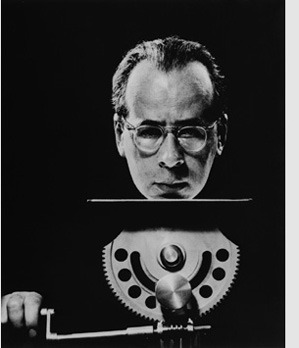
Throughout my life, I have been obsessed with illusions, especially when it concerns me and how I look. I’m around five feet, not that handsome, and I seem to have these strong mood swings, which go from sad to miserable. I have read a quote from Serge Gainsbourg, that beauty doesn’t last forever, but ugliness does go on forever. If I can understand the mechanics of seduction, I feel that I can remove my ‘ugliness’ and find some solace with a beautiful woman.
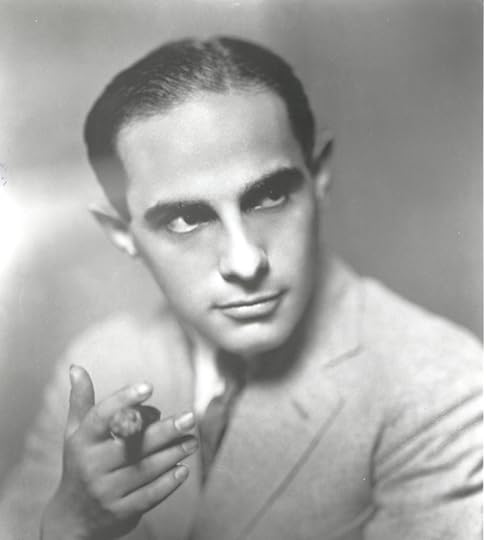
Although she was much older, as I stated above, I found her to be perfect. When you learn ballroom dancing, you’re allowing yourself to be vulnerable to your teacher. Irene had consistently showed me kindness and patience - a lot of patience by the way. Regardless of the fact that she was driven by the beat of the music or the melody, I was mostly affected by the song’s lyrics. I have consistently been drawn to Lorenz Hart’s lyrics, due to their misery, yet playful stance with respect to the vocabulary. At the very best, I can only reach bitter-sweetness, which for me equals a version of happy. With her in my arms, I feel like I’m traveling three feet in the air over a desert landscape. In my head, it was a Halsman imagery!
Irene at this time was offered a live TV show that played in the middle of the afternoon. It was the first time dance show, and the entire series focused on her and her dance studio “The House of Castle.” She offered me a role in the series, as one of her dance partners. I was taken on board, because as far as I know all the other males in this series were handsome. But she told me that I have a sense of character, and being a character is actually more important than being handsome, with respect to dance.
So for five days a week, in front of a TV audience, and broadcast live over the CBS network, I danced with Irene. The name of the series was “The House of Castle, ” which was her actual dance studio, and every episode she showed the audience how to do ballroom dancing. It was quite successful, and for a while it seemed that I had a home there and in people’s heart, as I struggled to dance with Irene, in front of, perhaps a million viewers. Then the worse thing happened.

I had some sort of seizure on the show, where I found myself on the ground. There was at least ten seconds of me writhing on the floor, where the cameraman focused on the background dancers, who were always in the shot. As the camera panned towards the dancers, a couple of the stage crew, picked me up or dragged me off to the side. What happened was a complete mystery, but it did get me fired from the show. Some have called it a Pinky Lee curse of some sort, but for me, it was heartbreaking because I was so close to being a success, or at the very least, having a position in a life that was suitable for me.
Time-to-time, Irene made contact with me to see if I was OK, but whatever happened during that shoot, our relationship changed from day into night. As her show got more popular, she stayed further and further away from me. Years later I relocated to Paris, and got a job as a ‘double’ for the actor/singer Serge Reggiani. He hired me when he saw me drinking at a local bistro on the Saint Germain des Prés. He mentioned to me at the time that he liked how I smoked my cigarette. It was around this time when I read in the Hedda Hopper’s column about Irene’s death. It was a combination of whatever happened to… and an obituary, in the Hedda style. The dance studio still exists, but I heard it was purchased by a Russian millionaire, who opened a series of dance studios throughout Russia as well as in the States.

As I was hanging out at the set for “Le Doulos, ” waiting for Serge to finish his scene, I came to the conclusion that I am really a shadow for other people. Not only Serge of course, but also for Irene, who taught me so much, yet even that, I was a mere phantom to her appearance on television. It is through the cracks of life, where I find myself at home. As I went home, and walking down St Michel, I heard “You Don’t Own Me” from a jukebox. I thought to myself “yes. ”

Published on May 02, 2014 10:57
May 1, 2014
May 1, 2014

May 1, 2014
I detest the 8-hour work day. It shouldn’t be more than 5, and that includes breaks and lunch time as well. And to be even totally more honest, I hate clocks. The whole clocking in and clocking out of a work place is insulting at its best. Work should be a partner in with desire, and nothing less than that. People live to eat, to breathe, and some to work, but work is more meaningful and beautiful when the worker sets his or her’s time and place. It should represent an organic relationship between work and pleasure. Work is often fastened to a purpose or to achieve something, which of course includes money - but to work with no purpose at all, except the pleasure of doing the job is the best way to live.
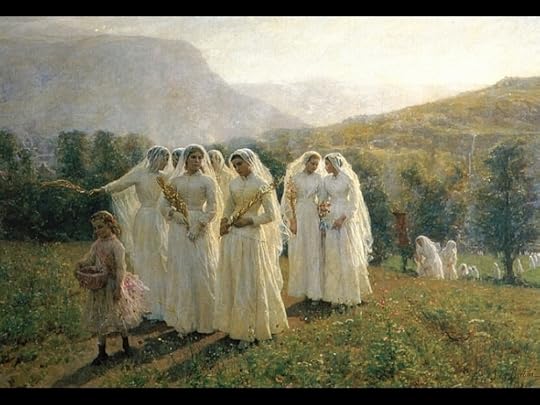
My two favorite painters are George Inness (1825-1894) and Jules Breton (1827-1906), both are considered to be landscape painters, but the big difference between the two, besides one being an American and the other French, is that they use the landscape to convey different meanings. Breton was influenced by the French countryside and basically sees the beauty and idyllic vision of the pastoral existence. Inness sees the landscape as an emotional expression of various degrees. The aesthetic difference is great, but what is astonishing in how two artists can look at a tree with the skies, and be totally different in how one sees the world.
Of all the schools and thoughts regarding the subject matter of painting, I will always give a deep reflection to landscapes, because it expresses to me either the perfect world or the emotional state of the painter towards their subject matter. As I write, I look outside my window on Waverly Drive, and I pretty much see the same things every morning, but the difference is not the landscape itself, but how I see it on a daily basis. Due to my mood swings, the landscape changes on a consistent footing. Yet, it pretty much remains the same, but only through my vision does it become something more vibrant and emotional.

On the other hand, the paintings by Cecilia Beaux (1855-1942) which are portraits of individuals of a certain class in America, are very straight forward. I don’t really care for her paintings, but I do admire her thoughts on perfection. She has been quoted saying "I can say this: When I attempt anything, I have a passionate determination to overcome every obstacle…And I do my own work with a refusal to accept defeat that might almost be called painful." Which I can totally identify with, because I too, struggle to overcome my personal troubles, and my rather doubtful habits, in trying to maintain a certain amount of work - but God forbid it can’t go beyond five hours a day!
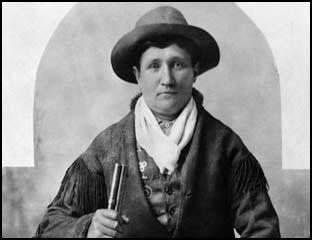
An interesting figure from the past, Calamity Jane, was a force of nature that was part of the wild west, but with the additional talent of adding ‘perhaps certain’ myths along the way. It has been commented that she was a handful, but on the other hand a very sweet person. Yet, she was driven to make an identity of some sort, and it always makes me chuckle that she called herself “Calamity,” which is probably her take on the force of nature, and how she places herself in the eye of the storm. Disaster is sometimes fate, but often made by eager hands to control fate or even worst, the ideal vision of a perfect landscape.
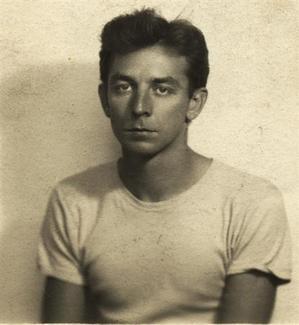
At a certain hour of the day, I like to read “The Magic Christian”, ” with perhaps music from Les Rita Mitsouko, while causally looking outside and making notes of the ever-changing landscape, that is my soul.

Published on May 01, 2014 12:51
April 30, 2014
April 30, 2014

April 30, 2014
Luigi Russolo’s “art of noise” is probably the most profound pieces of music I have ever heard. To me, it is the genuine soundtrack to a horrible century. The beauty that is destructive, yet all of us are attracted to the disaster as a moth is drawn to a flame. Become too close to the heat and the wings will burn off. I often felt that love for the great 20th century art, cinema, can lead one to leap into the void. It is not a question of cinema itself, but also all the by-products that goes with it.

It has been pointed out that Adolf Hitler and Eva Braun were devoted to the cinema, and especially to its actress Marika Rokk. Hitler was at the same time a fan of Mickey Mouse. What he saw in the mouse is something that I am not clear about. Nevertheless, Goebbels gave Hitler 12 Mickey Mouse cartoons as a Christmas present in 1935. Eva and Hitler had their own private screening room, but to me that becomes part of the problem. Going to a movie theater is fantastic on many levels, one, being that you’re in an audience. Being with an audience is so different from watching a film by yourself or with another person.

The first time I went to a movie theater was to see a Brigitte Bardot film in Larkspur, but the one screening I remember the most is when my dad took me to see a James Bond film called “Goldfinger.” The most exciting part of the movie was being at the Grauman’s Chinese Theater on Hollywood Bouvelard. Oddly enough, I have seen all the Bond films at least twice, except for “Goldfinger.” I can’t imagine watching that film in any other location except for the Chinese theater. To see that film now, at another location, would be like removing one of my arms - “Goldfinger” will be always attached to the feelings and sensations of going to the Chinese theater.
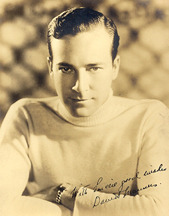
I have a faint memory of seeing Tod Browning’s “Dracula, starring Bela Lugosi and David Manners, at the Chinese Theater and hearing that there were actual bats inside the theater. I was led to believing that bats often fly across the projected screen, but I have never seen it happen. However, to this day, it is one of the first things I think about, while in the theater, and waiting for the film to start.
I am also touched to know and have seen the hand and foot prints of Mary Pickford and Douglas Fairbanks, outside the theater. One can imagine the angels that pranced around the property, where in Hitler and Eva’s theater, with the lights out, demons feeding off on the darkness.
Published on April 30, 2014 12:52
April 29, 2014
"Rear Windows: An Inside Look at Fifty Film Noir Classics" by Norman ConquestP
 Can be purchased here: http://www.magcloud.com/user/blackscat
Can be purchased here: http://www.magcloud.com/user/blackscatTwo words together that always brings me great entertainment: Norman. Conquest. Here he does the ultimate tribute, which is also a meditation on the classic film noir. In Norman’s point-of-view, one must have a window to see out, but more likely to look out of the small containment that is a room that expresses a troubling series of moments. “Rear Windows” is a quiet book, but it is also probably the most truthful book on Noir that’s out there. If one is placed in a prison cell, the window in that cell represents many things to the confined prisoner. To look out, or to project one to another place, like outside the window. These windows are not made to look into the space, but as a spiritual exit out of that space and time. “Rear Windows” is a book of remarkable wit, and also a sincere tribute to the visions that are noir, and projected on the screen, and then bounced back to our head.
Published on April 29, 2014 12:36
April 29, 2014

April 29, 2014
Oddly enough I wasn’t paying that much attention to the trial regarding the Rodney King beating in the hands of the Los Angeles Police Department. I figured they would be condemned, but more likely forced to resign or be transferred to some other part of the world. When they were found ‘not guilty, ’ it was like someone kicked me in the stomach. I wasn’t angry, but just deeply confused and hurt by the verdict, and again, if I was upset, I couldn’t even imagine how others will take the news.
I didn’t exactly feel the pain, but I could smell the smoke from our apartment in Hollywood. It was kind of like having a zit that needed to be popped. There is something so disgusting regarding the zit, that of course, one would want to squeeze the pus out of the pore. The violence in the air was a perfect combination, or a cocktail of despair and the lust to let loose. What surprised me the most, was that valley girls were coming in and looting stores on Melrose. It seemed the passion was electronic goods, like TV sets. The irony of all that is that there is nothing on TV. Even my co-worker was giddy with excitement. She hit the streets to observe, like it was a festival - and I guess in the religious sense, it was a festival.
My number one concern was the random acts of violence, especially against those who were Asian, due that I’m married to a Japanese woman. I didn’t want her to drive around the city. The air was thick with the random acts of cruelty, that seemed to be part of the festival feeling as well. A friend of my wife, just came to Los Angeles from Japan on that specific night, and he didn’t speak a word of English. He found himself in downtown Los Angeles, and he clearly noticed that no one was on the street. He didn’t know why? A Black American woman with a car full of kids saw him wandering around the streets, and told him to get right into the car, because it is too dangerous to walk around at this peculiar time. He didn’t understand what was happening, but he got in the car, and him and her family had dinner together.
On the other hand, the liquor shop down the corner from me was being broken into. The occasional gunshot could be heard from that location. It was sort of like zombies attacking living flesh, they didn’t stop arriving, and it was all sorts of people looting these places. When I went on the balcony to get some fresh air, I heard my neighbor across from me yell “Hey man don’t point that gun at me, cool it!” I sort of did a backwards moonwalk back into my living room and got down on the carpet floor.

I crawled towards the TV set to watch a VHS tape of Maya Deren and Alexander Hamid’s “Meshes in the Afternoon.” It is one of those timeless works that I can watch anytime and anywhere. For me, this was the true image of Hollywood, not what I was going through when I walked out onto my balcony. To sleep that night I put on Duke Ellington’s “Chloe (Song of the Swamp), which I think is my favorite song, and also worked as an inspiration for Boris Vian’s L’écume des jours (“Foam of the Daze”). I can’t stop the world, or what’s going on outside, but inside my head I always turned back to art, and that is what saves me at the end of the night.

Published on April 29, 2014 10:07
April 28, 2014
April 28, 2014

April 28, 2014
I know I’m being naive, but to see such horror in such a horrifying context is …. Horrible. As a meditation, there are those who turn away from horror thoughts, but I choose to go into the pool of such imagery, to attempt to make it not as worthy or to remove its importance to my life. Benito Mussollni’s death, at the hands of his fellow citizens is a series of images that are hard for me to erase in my mind. In 1945, him and his mistress Clara Petacci, were shot to death in Mezzegra, and then taken to Milan, where their bodies were hung upside down in front of a gas station. The crowd there vented their frustration and rage, and it is shocking to see Mussollni’s body like it was slaughtered meat at a butcher’s shop. The execution of Saddam Hussein now comes to mind as well. Is it justice, or is it the brutality of our times being expressed over and over again?

The dialogue between Saddam and his executioner is almost like a Noel Coward comedy, except within minutes we see the body of Saddam with a broken neck, dead, dangling far from the ground. The cell phone footage makes the death even more obscene. I’m so disgusted with images such as these, yet, I feel obliged to watch them, and watch them again. I feel if I watched them once, it will remain in my mind forever. The shocking aspect of seeing dead bodies, especially being placed in a historical context, makes it even more nauseating to me. The pornography of violence, whatever it is at a NRA convention or on YouTube is extremely disturbing. I think what I find depressing is the fact that we accept violence as an everyday occurrence, and in the sense it is part of our lives. Even though I’m quick to condemn it, I am drawn to the images of destruction, specifically the smashed-in face of Mussollni and Saddam’s image of death in the hands of a crowd that knew the narration and how it will take place in front of the cameras as well in their hearts. The only piece of art that comes to mind, that expresses the horror is Scott Walker’s song from “The Drift” called “Clara.” Here you can hear the aural sounds of the execution and the beatings of Mussollni and Clara. It’s a gorgeous piece of music. Jarring, yet a meditation on evil and the brutality that seem to be married forever in our way that we look at the world.
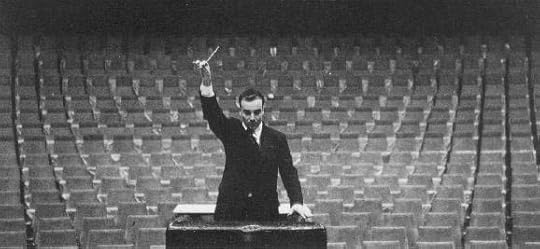
On the other hand, as like throwing dice against a wall, I appreciate the numbers in my favor coming up, and therefore I like to bath myself in the imagery of Yves Klein, who conveys a certain amount of magic or a blissful state for me. I can easily focus on that world as well. When I see his blue paintings or sculptures it is a perfect world to me. I don’t think of hate, anger, just the pure color of blue penetrating my soul into a euphoric state of consciousness. Klein also did a musical piece called “Monotone” Symphony. It is a symphony that consists of one note and it is performed by a 10 piece orchestra. The piece consists of two parts. The first 20 minutes is the one note being performed, and then the second part is exactly 20 minutes of silence.
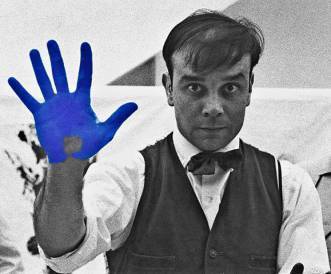
If I can somehow take all the ugly obscene images that're inside my head and transform it into a world of Yves Klein, that would be my ideal life. That, and some Jacques Dutronc music, of course.
Published on April 28, 2014 11:40
April 27, 2014
"The Collected Stories of Lydia Davis" a review
 ISBN: 978-0-312-65539-6
ISBN: 978-0-312-65539-6A book that took me forever to read, not due to its content (I don't think), but more by design. I tend to read short story collections very slowly, and almost not wanting to finish them. I think I read 80% of "The Collected Stories of Lydia Davis" in the bathtub. So if I take a bath everyday, how many baths is that? Nevertheless it will not have anything to do with Davis' writings, which are precise, focused, and not one wasted word. In other words, they're sort of perfection in practice.
There is no narration to speak of, but more of either a snapshot of a series of moments taking place, or observing something both remarkable and unremarkable. When I read this collection, my first thought is "wow, this is a real writer." There is something almost scientific in the way she constructs her works, which I think is quite musical. I never heard her read her stories in public, but I imagine it would be a performance where you have to pace yourself, and allow a certain amount of silence to come in and out. People have gone on about the length of her stories, but I don't that itself is important. That is kind of like looking at the tree instead of the forest type of issue. When you look at the whole book, it is very much a maximum wide-scope 70mm film, but focusing on small moments, that more likely will lead to something larger or life-changing. It's funny, recently I have been reading off and on Wittgenstein, and either I'm imagining all of this, but I see a connection between his writing and her writing. Maybe they're not meaning the same thing, but there is concern, or the ability to use text as sculpture of some sort. It is not restricted to writing, but it is also craving or shaving off the excess to make the statement or the words more maximum. I can't imagine anyone who is a writer would not be interested in Lydia Davis' stories. Such a mega-importance to have in one's house or in their hands.
Published on April 27, 2014 16:11
April 27, 2014

April 27, 2014
It’s amazing how you can meet just one person and that individual can change your life forever. But at that time, I didn’t know how important Teddy was to me, in that he gave me a direction in life, that he wasn’t aware of. Actually he thought I was giving him some sort of direction. The truth is I think we were on an equal footing, with respect to our relationship. At one point, we even shared the same girlfriend. This you would think would have ended badly, but the pleasure that came out of that relationship was fantastic, and to this day, I love them both.

My friend Teddy gave me a collection of Iceberg Slim books to write an article on for a porn magazine called “Dirty.” He was one of the editors of the magazine, and it was either his sense of daring or maybe a sense of humor to hire me to write a ‘literary’ column for the smut magazine. I took this opportunity as if I was an alcoholic in a magnificent bar. If I did well on this piece, it was for sure I would find myself in a position to also take over the section of the magazine dealing with reviewing porn videos, which at the time, held a certain amount of fascination. For instance, I was intrigued not by the sex or even the women in the films, but more with the environment that these “actions” took place.

There is one series where the producer would take a woman to his bedroom for the purpose of shooting porn, and he interviews her regarding where she came from, is this her first time (always is), does she have a boyfriend and is he OK with this shoot (always is), and this discussion is exactly the same over and over again. Even the sex is exactly the same. The blow job, doggie style, missionary sex position, and then back to blow job, and then usually the doggie style. What I found kind of erotic was the mechanical approach to the filming that lead to the sex becoming almost machine-like. Here was a producer who didn’t want to mess with schedules or work procedures.
For about 12 months, I would go to Teddy’s office to pick up a slew of porn videos (VHS of course) and also I could write about the culture as I see it. I can’t imagine anyone buying Dirty magazine would have the slightest interest in my writings, but the whole experience was such an eye opener for me. Teddy had an interest in black American culture of the 1960s and 1970s. The Iceberg Slim books were at that time was published by Holloway House, a small press that was devoted and focused on black American literature. The odd thing about these books is that one could buy them in black neighborhoods, but rarely do they show up on the radar, for instance, if you go to your local chain bookstore outlet in Woodland Hills. But one could also buy these books at the newsstand on Cahuenga and Hollywood Boulevard. Reading them opened my eyes to a culture that I wasn’t fully aware of. Also, Iceberg, was a man out of his time, and even though my experiences in life are totally different than his, I feel we share that aspect where life is lived, yet we are not in our time.

Wittgenstein quoted Kleist “what the poet would most of all like to be able to do would be to convey thoughts by themselves without words.” We both agree that is an odd thing. Nevertheless when I read Iceberg I get the idea that his world exists as a snapshot of a specific time. But of course the issues are the same ones, but his approach to that era was seen as being old-fashioned or a tool of the system. Porn life is also restrictive, in that it has its own codes and rules. But there is also a sense of satisfaction to be in such a world.
My girlfriend at the time was only a fleeting moments of time, yet, a profound one at that. We still lived together after our affair was over, but Teddy moved in a month later. I knew he felt bad about it, but I never felt that he should feel guilty about it. These things happen, and also I wasn’t interested in her in that fashion. But again, what impresses me is the interior when I had my fling with her. The entire apartment was painted black, and had black thick curtains covering the windows. When I woke up, I wasn’t sure if it was daylight or nighttime. All I know is that I would bump into someone on the way to the kitchen or bathroom, and it was always Teddy. I appreciated those moments, as well as the opportunities he gave me for writing or exploring another world. In essence, he was one of the most influential men in my life.
Published on April 27, 2014 12:20



